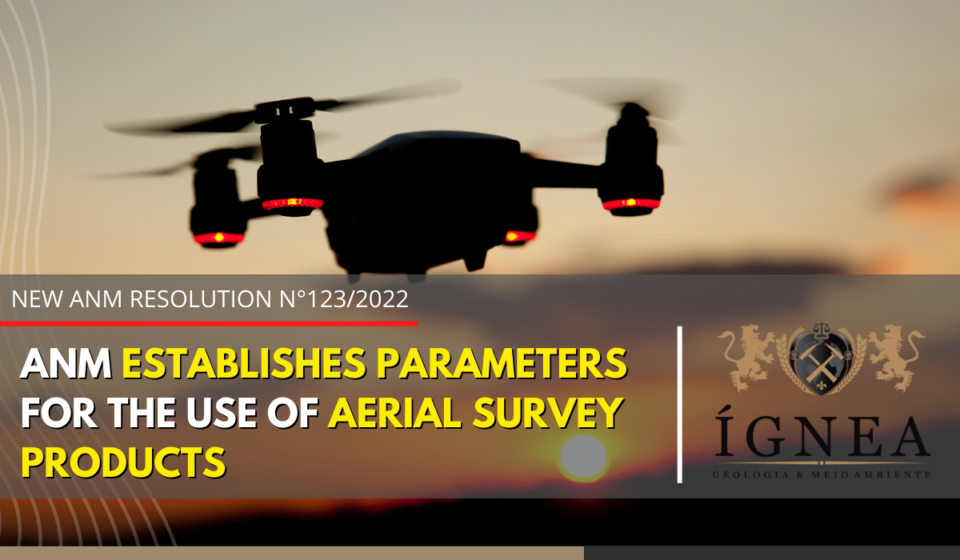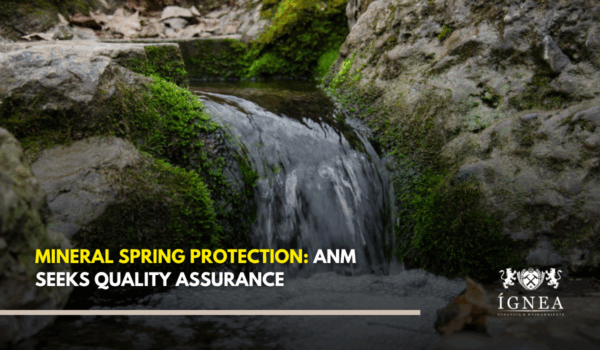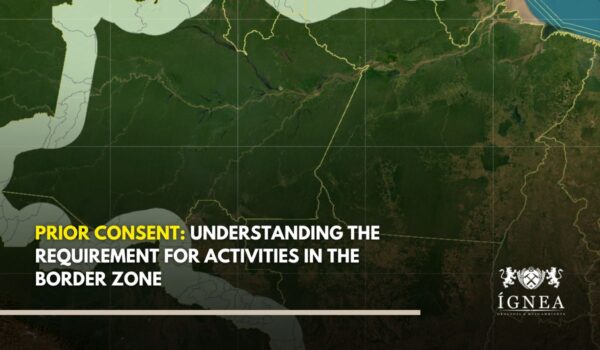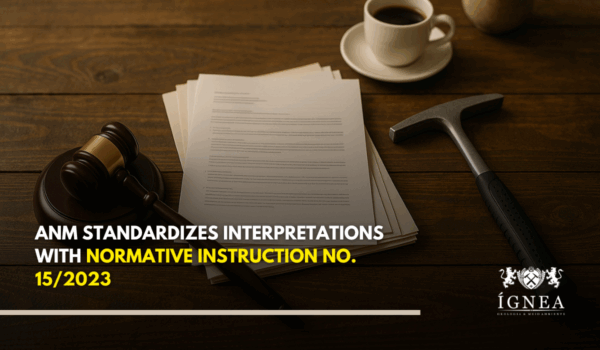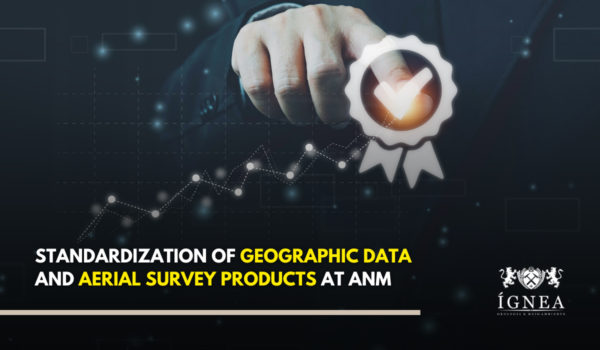The National Mining Agency – ANM, published on December 2 in the DOU, Resolution ANM No. 123/2022, which regulates and establishes the parameters for evaluation and acceptance of products arising from aerial surveying (Produtos Decorrentes de Aerolevantamento – PDA) submitted to the National Mining Agency (ANM), in particular those obtained by Remotely Piloted Aircraft System (RPAS).
The regulation released by the Agency establishes a minimum quality control of the PDA images, and defines the acceptable standards for delivering reliable data for project approval.
Below, we highlight some pertinent sentences from this Resolution that should be taken into consideration for aerial surveys.
RESOLUTION ANM NO. 123, OF DECEMBER 1, 2022
…
V – Products Resulting from Aerial Survey (PDA): cartographic products obtained from data collected through aerial survey with the purpose of obtaining accurate geometric measurements on the terrain, which can be presented as:
(a) orthoimagery;
b) orthophotos;
c) mosaics;
d) digital terrain models (DTM);
e) digital surface models (DSM)
f) topographic maps
g) hypsometric maps
h) cadastral maps; and
i) other thematic maps;
*The ANM defines and stresses that the data obtained from RPAS must maintain an accuracy of geometric measurements, liable to be rejected in conditions of products outside the established standards.
…
X – Standard of Cartographic Accuracy of Digital Cartographic Products (Padrão de Exatidão Cartográfica dos Produtos Cartográficos Digitais -PEC / PCD): indicative parameter of the positional quality of the PDA, based on the tolerances of maximum permissible error (erro máximo – EM) and standard error (erro-padrão – EP), used in the methodology of the Technical Specification for Quality Control of Geospatial Data (ET-CQDG), of the Geographic Service Directorate (DSG);
*The PEC – PCD will be used to define the test line of the error/deviation level acceptable by the ANM for validation of the final product. In this test statistical evaluation processes are used for the PDA deference.
Nota: A maioria dos drones dispõe do uso de GPS navegação embarcado, o que dificulta na precisão para amarração de pontos topográficos por exemplo. Recomenda-se utilizar do Sistema Geodésico Brasileiro – SGB para obter um maior nível de acurácia dentro dos padrões da Resolução.
Nota2: Todos os PDA devem ser acompanhados das Anotações de Responsabilidade Técnica – ART para validação do produto.
…
Art. 11: For analysis of PDA absolute positional accuracy, the coordinates of the verification points must be determined from an independent source of higher accuracy equivalent to at least three times the accuracy required for the tested data set.
*The Resolution emphasizes again that for topographic data the use of geodetic GPS (RTK or Total Station) is required. The objective is to correct the low accuracy of the navigation gps. The norms for each type of work may still be required by the ANM.
…
Art. 13: The information relative to the absolute positional accuracy analyses must be presented by means of metadata and/or independent quality report.
*The independent quality reports mentioned are related to the report itself which is generated within the processing software. This report attributes data about accuracy, control points, etc.
…
ANM Resolution No. 123/2022 will be effective as of January 2, 2023.
To access the full Resolution, simply click on the link below.
RESOLUTION ANM NO. 123, OF DECEMBER 1, 2022

